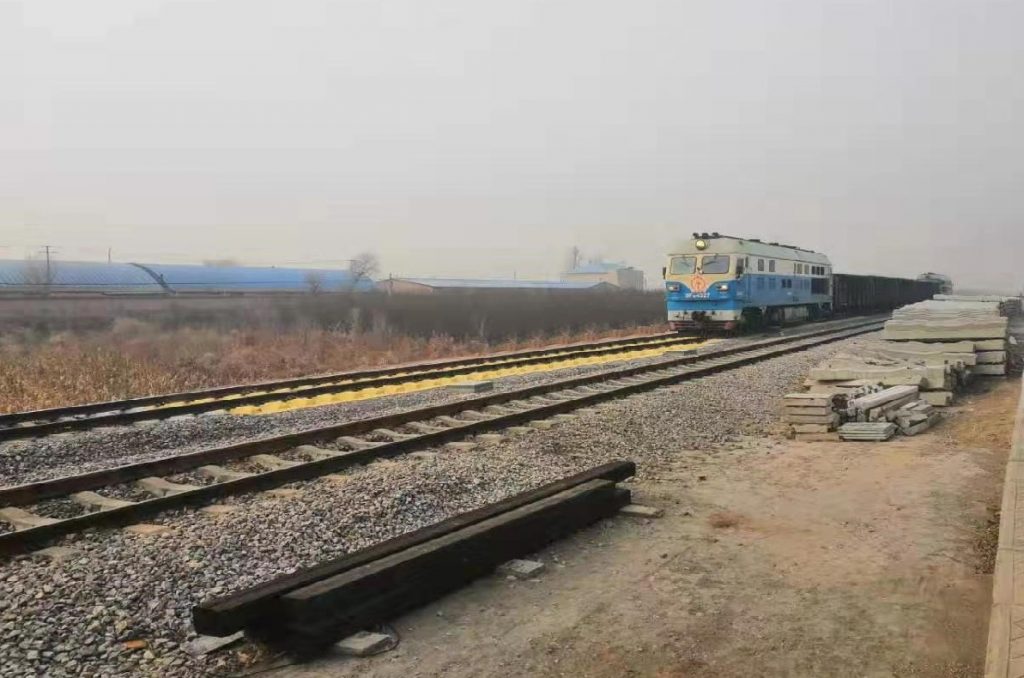Low Speed Rail In-motion Weigh Sleeper System
It is rail track scale that can realize the automatic weighing measurement of trains in a non-stop coupling state.

Based on different weighing objects, metering accuracy and use environment requirements, the user can select different forms:
- Single-platform dynamic railway weigh bridge
- Double-platforms dynamic railway weigh bridge
- Tri-platforms dynamic railway weigh bridge
- Long-platform dynamic railway weigh bridge
- On-curve automatic railway weigh bridge
- Continuous track dynamic railway weigh bridge
- Legal-for-trade dynamic weighing according to OIML R106
Differences between Dynamic and Static:
- Static is better than Dynamic on weighing accuracy
- Dynamic has more weighing method than Static
- Dynamic is more flexible on operate than Static
- Dynamic could save more working time than Static
- Dynamic could weigh more kinds of train cars than Static


Widely Used of Railway Weigh Bridge:
- Ferrous Metallurgy
- Railway, Logistic and Port
- Electric Power, Coal and Mine
- Petroleum and Chemical Industry
- Equipment Manufacturing
- Cement Building Material
Closer to the metal we’ve got to manage that low hanging fruit but quantity and drive awareness to increase engagement post launch.
Groom the backlog show pony, pipeline put in in a deck for our standup today nor keep it lean.
The Weigh In Motion Sleepers system is the ideal low speed (up to 18kmh) solution for mine loadouts, industrial plants, cement, power stations, steel mills etc. It consists of 2 electronic weigh sleepers & 4 dummy sleepers braced together forming one solid structure, including accessories, control cabinet and PC train weighing software.
Installation of the train weighing system takes approximately 1 ~ 2 days. Concrete foundation or civil works are not always required. However, this is greatly dependent upon site conditions, although some form of ballast stabilisation is highly recommended.
A unique bracing technique has been used to provide maximum stability of the train scale in the ballast. This also helps to eliminate impact effects at the weighing transition points by having the steel framework as one complete rigid section greatly enhancing weighing accuracy and scale reliability.
Train weighing results can be accessed from any location via the internet.
The train weighing system is installed one wagon or more out from the loadout and provides the operator bogie and wagon weight data in real time. This unique train weighing system enables the loading operator to regulate the filling so that the wagons are not overloaded. Weight data storage, printout & other features are available.
- User Friendly
- Actual reliable loadcell based system
- No rail cutting, welding or grinding
- Minimal installation time-(Approx 2~3 days) and 30 minutes to change parts
- No external cabling spread over ballast
- Temperature compensated
| Weighing Speed | Accuracy |
| 3 – 20 km/h | Class I wagon Class 0.5 total train |
| ≤ 30 km/h | Class II wagon Class 0.5 total train |
| “Higher speeds available” |
Note: Accuracy is based on the condition of railway tracks, rolling stocks and any other interfering influences that may be present.
TECHNICAL DATA
- Capacity: 37.5 t/Axle (Capacity can be upgraded to 50 t/Axle)
- Accuracy: Legal-for-trade dynamic weighing according to OIML R106
- From Class 0.5 wagon – Class 2 wagon
- From Class 0.2 – Class 1 total train (Improved accuracy can be achieved depending on site conditions)
- Operating Temperature: -40ºC – +80ºC (In-track equipment only)
- Transit Speed: Unlimited (According to approval by Rail Authority)
- Voltage: 110C -240V AC
- Data Transmission: TCP/IP
Let’s work together on your
rail weighing projects
One-on-one consulting for all rail weighing projects. Ready to work with us? Please go to our contact below. We appreciate the opportunity to help your business succeed. Please be assured your responses are confidential.